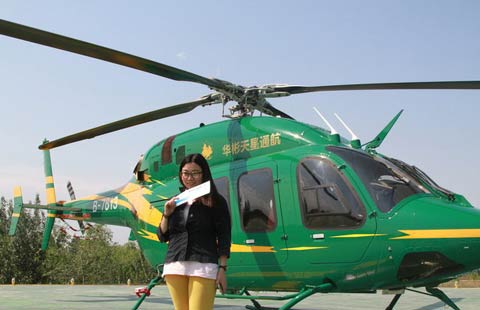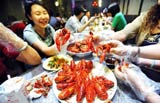Wine, liquor sales start flowing again
By SHI JING (China Daily) Updated: 2015-05-20 10:00The Chinese wine and liquor industry finally has something to celebrate after going through a revenue drought for more than a year.
A report released by UBS Investment Research, part of the Swiss banking group, showed that the liquor sector bounced back in the last quarter of 2014 and the first three months of this year. The steady rise came after six quarters of poor results.
Income increased by 1.7 percent in the last three months of 2014 compared to the same period in 2013, the report highlighted. In the first quarter of this year, income jumped 9.6 percent year-on-year. Net profit growth was 2.8 percent and 5.6 percent respectively.
"Ever since August last year, the major baijiu suppliers (Chinese liquor industry) have finished reducing inventory, which has again resulted in an increasing wholesale price of baijiu," Zhao Lin, director of the food and beverages department of China Equities Research at UBS Securities Co Ltd, said.
Sales of quality wine and liquor have picked up while consumption of mid-grade products has showed steady growth, the report showed. The industry should also see positive growth this year, with revenue increasing by 4 percent year-on-year.
Before the crackdown on extravagance and corruption, government department receptions contributed to more than half of Chinese baijiu consumption annually. But since the crackdown in 2012, that has mainly disappeared, resulting in falling wine and liquor prices.
"Contracted consumption at government department receptions has resulted in an instant price decline of baijiu products," Zhao said.
The UBS report also pointed out that lower-grade baijiu, priced between 50 yuan ($8.05) and 200 yuan a bottle, will perform better than top-grade brands that cost 500 yuan in terms of revenue and growth rate in 2015.
Last year, mid-range baijiu companies expanded their distribution channels and this has paid off. They are also major players where they are based and have benefited from regional policies as well as lower production costs.
"Top-grade baijiu is just starting to pick up in 2015," Zhao said. "The growth rate is unparallel with several years ago. The Chinese market's major driving force is now consumption by the general public. This is more sustainable as mid-grade baijiu companies provide products which are more affordable to the ordinary consumers."
According to market consultancy Nielsen's tracking data, the baijiu market started to show signs of recovery last year after going through a challenging period. Nielsen's findings came from more than 1,100 hypermarkets in 22 key cities across China.
Last year, sales of baijiu increased by 5.5 percent compared with 2013, according to Nielsen. In 2013, sales dropped 2.7 percent year-on-year, Nielsen's data showed.
Compared with imported spirits, beer, wine and other alcoholic beverages, baijiu enjoyed the strongest growth of 5.6 percent. Vodka came next with a 5.1 percent rise, while the growth rates of other alcoholic beverages hovered below zero.
"Besides the promising factors-optimistic Chinese consumer confidence, increasing purchases especially among consumers from central to western China and tier-2 and tier-3 cities-the recovery of baijiu growth is largely attributed to enhanced promotions by manufacturers," Kiki Fan, managing director of Nielsen China, said.
Consumers aged between 35 and 45, especially those in the middle-class bracket, are crucial to the baijiu market, according to Nielsen's findings. They start to discover high-end baijiu between the ages of 25 to 35. Then from 35 to 45, they gradually form a "brand loyalty".
- Wine, liquor sales start flowing again
- Uber joins Baidu as Nokia's maps unit draws bidders
- Investors rush to grab share of Huatai float
- Premier stresses employment through entrepreneurship
- Tencent to launch ideas incubator in SW China
- Italian castle for sale on Chinese Taobao
- Sinopec, BP sets up marine fuel joint venture
- Xiaomi debuts in US, Europe with online store

















